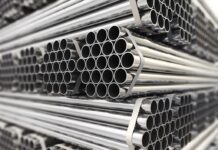As the modern light industry evolves more and more with time, the packaging machine is gradually becoming a part of our lives. Vertical packaging machinery is one bright example. This machine could be used for packing various tiny pieces and powders, not only large-sized materials. It is suitable for both food substances and non-food ones. The most important feature of its physics is continuous packaging. This significantly reduces the labor and time costs.
Vertical packaging machines are pretty fast and can seal the package at the very moment. Then, the packaging can be automatically cut. This machine can be utilized for non-branded packaging material as well as fast-speed packaging with materials handling logo prints. Packaging errors can result from the general machine making a wrong assessment due to the packaging material’s color. The configuration of the packaging machine should address the issue of automatic placement.
According to the error compensation model, there are three types of continuous photoelectric positioning systems: advance and retreat, the brake, and two transmission systems synchronous.
The mechanism of the packaging machine is quite simple. It belongs to a type of plc programmable for a sequence of packaging moves. When it leaves the factory, the packaging machine will have an established system that it will follow when it returns to the factory.
The plain material must first be directed to be cut and then measured. The system controls the material to be cut to the desired weight, and then it moves to the next step. The computer controls the sealing appliance to seal the material. The cutting machine then cuts the bag. Thus, one batch of packaging has been achieved.
The food packaging system can be modified by the customer to meet their needs. Standard manual packaging methods are no longer sufficient to meet market demand. Manufacturers must look for equipment that can produce automation and improve production’s efficiency. This led to the creation of an automated packaging machine that is high-quality and high-performance.
You can divide packaging machinery into pillow packaging machines and vertical packaging machines.
It can be used for many substances, such as fluids, powders, and granules that have good fluidity. It is primarily dependent on its own gravity but can also be packaged with certain mechanical outcomes. There are two types of packaging for vertical packaging machines: the cutting with the cursor or the cutting at a static length. The functions can be switched easily, and the packaging technique that is used while the machine is operating is determined by the packaging film. A package is made with either a cursor or no cursor. With a cursor, the film is clipped at a fixed length. It is suitable for pillow packaging and single-piece or mixed packaging with sufficient rigidity and regular shape.
Vertical packaging machines are machines that make flexible packaging fabric rolls into bags, then fill and seal the bags. All three functions can be done automatically and continuously.
That is it.
After that, the wrapping process follows as well. A roll of film is positioned on a support device, a set of driving rods, and a tensioning tool. The placement of a brand on a packaging fabric on the film is then caught by a photoelectric controlling appliance and controlled by a photoelectric detector. Finally, the film cylinder is rolled by a lapel for wrapping the tube. The film of the interface is first moved into a cylindrical and longitudinally warm-sealed using a longitudinal heat-sealing device to create a tube. Next, the cylindrical film is transferred to the part of the transverse heat-sealing device to be diagonally sealed to make a bag. The metering appliance measures the item and fills it into the bag via the upper filling pipe. Next, the transverse heat sealer heat-seals the cylindrical film and cuts the center to create the box unit body.
Find a Home-Based Business to Start-Up >>> Hundreds of Business Listings.

















































